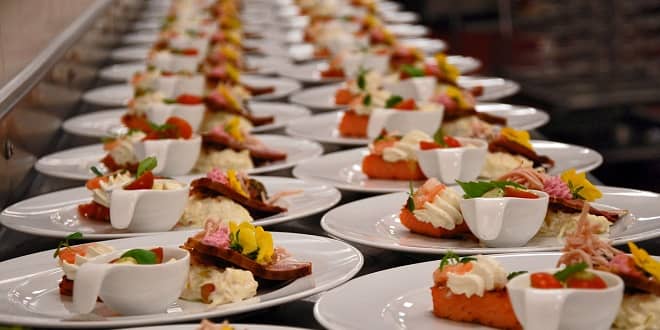TRADITIONAL FERMENTED FOODS
Reason for studying oriental fermented foods:
Different from western foods (taste, texture, flavor and appearance.) microbiologicaly different from western foods: (mixed culture of yeast, bacteria, and mold.)
cheap and nutritious: large number of people consume.
too many things to modernize in plants.
receiving increasing attention of western consumers.
hİghly nutritive because;
Complementary effect of animal and plant proteins
İncreased protein efficiency ratio and digestibility
Synthesis of vitamins
Shorter cooking time
Desirable enzymes are produced
Soy sauce
-dark -brown liquid, salty, pleasent aroma
– made by fermenting soybean, wheat and salt with mold , yeast, and bacteria.
-During fermentation
enzymatic
Proteins® peptidies, aminoacids, sugar alcohols, acids
carbohydrates are hydrolysed
chemical hydrolysis is tried in U.S.A but taste of product is not the same
used as a seasoning agent
Japan leads soy sauce industry ( 1billion liters)
Raw Materials and their treatment
Soy Beans: defatted soybean
Soy bean ® washed ® soaked overnight ® drained ® steamed (at 10lb/ in2 for several hrs)This will effect the future enzymatic action on soy proteins
Wheat:
Wheat ® roasted ® coarsely crushed. Adds color and flavor to resulting soy sauce and destroys surface microorganisms and facilitates enzymatic hdrolysiswheat serves as a precursor of sugar, alcohols, organic acids and flavor compounds.
Wheat is rich in glutamic acid)
Salt NaCI ® gives salty taste, surpress undesirable organisms
Soy sauce koji:
Koji: mold growth on cooked cereals or/and soybeans.
– serves as an enzyme source
made from a mixture of roasted wheat and steamed soybeans with
A koji starter ® Aspergillus oryzae or A. soyae (Called tane koji)
Aspergillus oryzae on wheat
Preparation of tane koji:
Polished rice…soaked in water…drained.. Steamed…mixed with 2% of wood ash, for trace elements …add A. oryzae spores .. Spread out in tray … cover with damp clothes … incubate at 30C for 5 days (green to yellowish spores of A. oryzae mycellium… spores are harvested ® dried at 50 C and stored at 15 C.
A good soy sauce: 18% salt, 4.6-4.8 pH
Price is determined by:
Nitrogen yield , Total soluble nitrogen
Amino N /total soluble N: >50%is good)
Glutamic acid and salt: principle flavoring
Sugars: glucose, arabinose, xylose, maltose, galactose, glycerol and mannitol (also alcohols)
Organic acids: lactic, succinic and pyroglutamic
Color is due to non-enzymatic browning
TEMPEH
Indonesian and the first “fast food”.
soybeans are soaked in water or acidified water at room temp.( partial germination) acid is produced ( pH drops from 6.5 to 4.5 ) ie L casei,
The bacteria produce vitamin B12
The most desirable bacterial species for this stage is K. pneumoniae
The soaked beans are de-hulled, cooked, drained, cooled below 35 °C, and dusted with wheat flour, inoculated with Rhizopus oligosporus
Defects include:
(1) black patches due to fungal sporulation,
(2) slime due to excessive bacterial growth ( too little O2 or a temp. of 42 °C)
(3) a yellow color ( due to toxic fungi. )
The yellow color indicates that the tempeh is highly toxic and it should not be eaten.
MISO (Bean paste) in Japan.
like peanut butter (smooth, some chruncy) light-yellow to reddish-brown.
used as flavoring agent, use in dips, salad dressing, sauces
contains > 10% salt. (can be kept without refrigeration)
TOFU
Soy cheese : curd made from soymilk (tofu in English)
The soymilk is curdled by adding coagulants (CaSO4, MgCl2, glucono-delta-lacton (GDL)).
Pressed
SUFU
Sufu resembles cheese, Parmesan or Camembert and referred to as Chinese cheese.
Ang-kak
SAFETY OF ORIENAL FERMENTED FOODS
Scientist can not find aflatoxin and aflatoxin producing cultures in oriental fermented foods unless they intentionally contaminate with these cultures.
cooking, salting, acid formation, antibiotics production, and low moisture are the probable reasons for the safety of oriental fermented foods.
Mycotoxins – the yellowish colonies are of Aspergillus flavus, a producer of aflatoxin.
The green colonies are of Penicillium, another mycotoxin-producing genus (ochratoxin, patulin, penitrem, PR toxin).
SHALGAM (SALGAM)
Shalgam: (functional foods, red coloured, cloudy and sour soft drink ) traditional lactic acid fermented beverage( black carrot (Daucus carota L), bulgur flour, sourdough, salt, turnip(Brassica rapa L), and water are used for production. )
Carrot anthocyanin (eastern): traditionally grown in Turkey, Afghanistan, Egypt, Pakistan, and India
carotene (western): grown WorldwideOrange-rooted carrots that are rich in carotenes.
It is difficult to preserve carrot juice due to high pH and high risk of fermentation.
black carrot
total sugar: 5.12–6.45 g/100 g. ( sucrose (1.20–3.31 g/100 g),
glucose (1.10–5.60g/100 g), and fructose (1.00–4.36 g/100 g).
Turnip: glucose (1.41 g/100 g), fructose (1.10 g/100 g),
bulgur flour: total sugar 2.23–3.30 g/100 g and 4.44–5.84 g/100 g,
Sourdough (mixed cultures of different LAB and yeasts
LAB : L. sanfranciscensis, L. brevis, L. plantarum, L. reuteri, and L. fermentum.
yeasts : S cerevisiae, S exiguous,Candida krusei
( – no standard production technique in industry.)
two methods for shalgam production:
-the traditional method (sourdough fermentation and carrot fermentation.)
– the direct method. (only the carrot fermentation is applied. )
During fermentation:L acid, ethanol, organic compounds
Traditional Production Method
Traditional Production Method
1- First Fermentation (Sourdough fermentation): enrichment of LAB and yeasts. -Bulgur flour (3%), salt (0.2%), sourdough (0.2%), and adequate water are mixed.
-room temperature for 3–5 days. -.(pH drops .)
2-Second Fermentation (Carrot or main fermentation)
extracts from First fermentation are combined with sorted and chopped black carrots (10–20%), salt (1–2%), if available sliced turnip (1–2%) . wooden vessels, fiber glass, plastic, or stainless steel tanks.
Fermentation : 3 to 10 days at 10–35°C., colour compounds (anthocyanins) are extracted.
can also be seasoned by adding chilli powder.) no Clarification is applied. marketed in sealed bottles and plastic containers
Direct Production Method
Factors Affecting Shalgam Fermentation
– microflora ( LAB, yeast, no commercial cultures available, inoculating up to 15% of shalgam from a previous production )
– chemical composition of raw materials ( turnip improves sensory characteristics, Bulgur flour: nutrent source for microorganisms)
– fermentation temperature(at 20–30°C Leuconostoc mesenteroides and yeasts are favoured, LAB grow rapidly at 30–35°C. extraction of anthocyanins)
– salt. 1–2% to control the flora, favouring LAB Leuconostoc spp. Are the least tolerant to salt,
Lactobacillus spp. and Pediococcus spp. have similar salt tolerance
The composition of shalgam beverage
BOZA
Boza is a colloid suspension light to dark beige, sweet, slightly sharp to slightly sour beverage consumed daily in Bulgaria, Albania, Turkey, and Romania.
It is made from wheat, rye, millet, maize and other cereals mixed with sugar good source of bacteriocin-producing lactic acid bacteria
LAB: L plantarum, L. acidophilus, L. fermentum, Leuconostoc raffinolactis, Ln. mesenteroides and Ln. brevis.
The yeasts: S cerevisiae, Candida tropicalis, C. glabrata, Geotrichum penicillatum and G. candidum
BOZA PRODUCTION
-the grains: washed, cooked in an autoclave for 2 h at 4–5 atm.
mixed with cold water at a ratio of 1:1 volume parts.
-fermented 2-3 days at room temp ( old boza and yeast innoculated)
-The mash is percolated and then stored at 4C.
-Sugar is added before bottling
Boza was prepared in the traditional way.
Maize, wheat and rice flours were mixed in the
ratio of 2:1: 1. respectively.
boiled in 3 times water (w/v) for 1 h under continuous stirring. Cool overnight and diluted by 2.5 times with water and sugar (20% w/v) was added.
Inoculum (2%) ( backslopping) Fermented at 25-30 C
Boza without preservatives nor unpasturised has two days of shelf lives. Then it gets too sour.
Storage at 4 C could maintain the good qualities of the drink up to10 days.
Ed. Ahmet Nezihi Turan;
Ministry of Culture and Tourism Publication , Ankara 2007,
…

